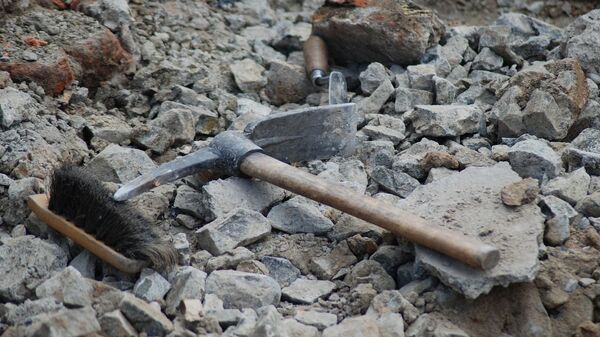An ancient fort that dates back to the times of King David nearly 3,000 years ago, discovered during salvage excavations in Golan Heights, may well be the earliest fortified settlement to be found in that region, The Times of Israel reports.
The find has also reportedly been "tentatively linked" to the Geshurite people whose capital is "recorded in the Bible as having been located nearby, to the north of the Sea of Galilee".
"We understood that we had something very, very important", Barak Tzin, co-director of the dig site, said as quoted by the newspaper. "We were astonished to discover a rare and exciting find: a large basalt stone with a schematic engraving of two horned figures with outspread arms."
The archaeologists also discovered what they believe to be an altar, located near the aforementioned etchings, "upon which was found another seemingly ritual object of a small figure holding what looks to be a drum".
As Dr. Ron Be’eri, Israel Antiquities Authority’s scientific adviser in the northern region, explained, it remains unclear who exactly manned the fort.
"The minute that Egyptian and Hittite empires are destroyed… there is a big vacuum. There is no historian that writes the history of the era and we return to a sort-of ‘pre-history’ in which we only have physical artifacts to base our assumptions upon. So we go into the realm of speculation. It is impossible to know what really happened," he said.
He further explained that the dating of the fort to circa 11th-9th centuries BC was actually based on evidence such as pottery sherds that appear "somewhat comparable" to those discovered at Israelite sites dated back to circa 10th-9th centuries BC.

"The ability to identify the pottery is limited, we don’t have many comparisons," Be'eri remarked.
And while he noted that the fort belonged to the Geshurite people, the newspaper points out that "there is scant physical evidence of these peoples during this era, and no outside textual documentation other than various citations in the Hebrew Bible".
"The problem is, the biblical text is not a historical document, rather theological, and was written by lines of kings who had their own agenda," Be’eri said. "Therefore we must rely on physical artifacts."

